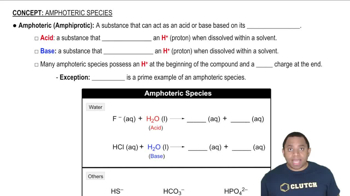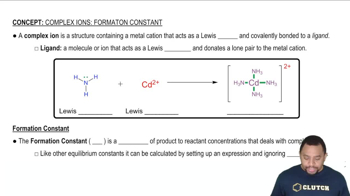Here are the essential concepts you must grasp in order to answer the question correctly.
Amphoteric Oxides
Amphoteric oxides are compounds that can react with both acids and bases. They exhibit dual behavior, meaning they can either donate protons (acting as acids) or accept protons (acting as bases). Zinc oxide (ZnO) is a classic example, as it can react with strong bases like sodium hydroxide to form complex ions.
Recommended video:
Net Ionic Equations
A net ionic equation represents the chemical species that are actually involved in a reaction, omitting the spectator ions that do not participate. To write a net ionic equation, one must first write the balanced molecular equation, then dissociate the soluble strong electrolytes into their ions, and finally eliminate the spectator ions to focus on the core reaction.
Recommended video:
Complex Ion Formation
Complex ions are formed when a central metal ion binds with one or more ligands, which are molecules or ions that can donate electron pairs. In this case, the reaction of ZnO with sodium hydroxide leads to the formation of the complex ion Zn(OH)4^2-, where zinc is the central metal ion coordinated by hydroxide ligands, illustrating the interaction between metal oxides and hydroxides.
Recommended video:
Complex Ions and Formation Constant
 Verified step by step guidance
Verified step by step guidance

